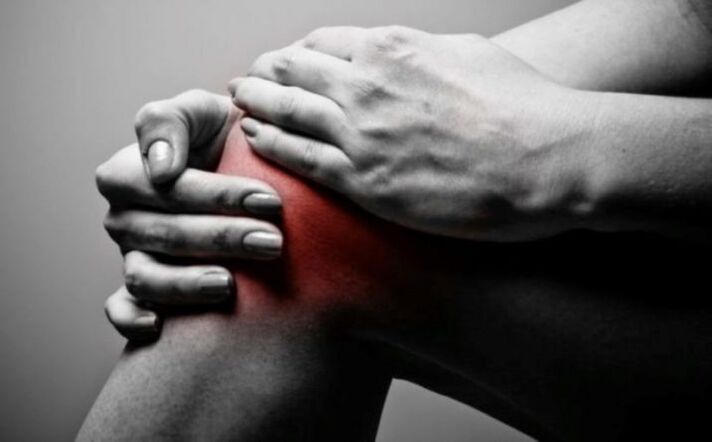
There are many joints of the joints, they vary by origin, development mechanism, symptoms and treatment methods.Most often, among other things, arthritis and arthritis are diagnosed.Diseases are similar, but they have some significant changes.Differential diagnosis is required for the correct choice of therapy and timely prevention of severe complications.To prevent misunderstandings and confusion, you need to understand how arthritis changes and what are both diseases.
What is arthritis and arthritis, how do they change
Arthritis, arthritis - two different diseases affecting the joints.Despite the consonant of the terms, this is not the same diagnosis, and even more synonyms.They also have general and different signs, so they should not be confused.
Arthrosis is a common degenerative-district pathology, which is characteristic of:
- damage to cartilage tissue with the gradual incorporation of ligaments, muscles, synovial shell, bone in the destructive process;
- non -inflammatory character;
- chronic form of the course;
- It develops in place, without affecting the body as a whole.
Arthrosis occurs mainly in adulthood, after 45 years, in women in the background of body aging, the ear of the muscular system.Occasionally it appears in younger due to significant physical exercise, severe damage, adverse working conditions.According to the international classifier, MKB-10, a M15-M19 code is set.
Arthritis is a collective term that includes any common disease:
- is inflammatory;
- It continues most often in an acute form, turning into chronic;
- affects bone tissue and joint cavity;
- It occurs as a systemic lesion, with the inclusion of some articular compounds and the organs immediately intended in the pathological process.
Adults under 40, as well as children, undergo arthritis.The disease is reversible, successfully treated by undergoing timely medical assistance.According to the classifier, ICD-10 has an M00-14 code.
Arthritic and arthrose pathologies are often interconnected.Incomplete arthritis with age leads to dystrophic changes in the cartilage.On the other hand, arthritis during periods of irritation is associated with inflammation of the tissues.A common disease is called arthritis arthritis.
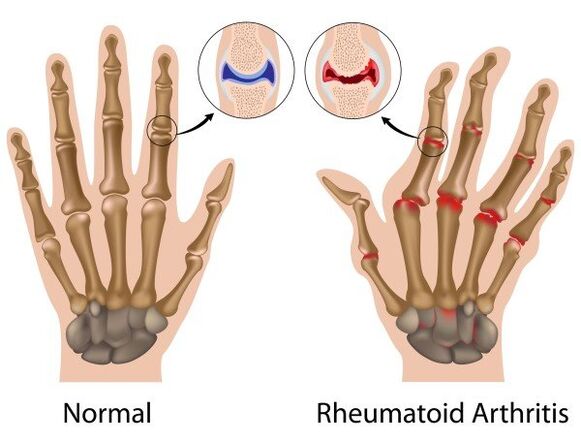
Types of diseases
Arthritis in the official medical classification is divided into species according to some criteria.Depending on the form, acute (severe inflammation, suitable to complete the cure) and chronic (incurable pathology with irritation).According to the degree of joint damage, there is monoarthritis (in a joint), oligoarthritis (in 2-3 nodes), polymorritic (multiple inflammation).
The most popular arthritis classifier is considered by origin:
- Rheumatoid - the cause of the root lies in genetic disorders of an autoimmune nature;
- Infectious (septic) - the development of pathogenic microflora directly in the articular cavity;
- Reactive - secondary complication of respiratory, genitourinary, intestinal infections;
- Traumatic (post -traumatic) - formed due to mechanical damage to bone, tendons, muscles, ligaments;
- Exchange (gout) - violation of metabolic processes in the body;
- Rheumatic - develops after a bacterial infection in the body.
Arthrosis is characterized by an exclusively chronic form with damage to an articular complex.It mainly affects the removable joints in the human body - foot (knee, ankle, foot), hands (shoulder, elbow), as well as in the jaw and vertebral areas.
Depending on the localization, it is divided into:
- knee (gonarthrosis);
- hip (coxarthrosis);
- ankle;
- Brachial;
- elbow;
- hands;
- toe;
- spondylarthrosis spine;
- cervix (Unkwertbral);
- Landing-not complete (VMS).
Therapy mainly depends on the type of articular pathology, especially arthritis.
Change in the causes of arthritis and arthritis
Arthritis and arthritis occur against the backdrop of many adverse factors.Common provocaters of both diseases are:
- genetic predisposition;
- injuries (bruises, displacements, sublux, stretch, fractures);
- congenital abnormalities in the development of the skeletal muscle system;
- metabolic and hormonal disorders;
- Severe chronic diseases (rheumatism, tuberculosis, diabetes mellitus, thyroid problems);
- Improper life (low activity, poor food, overweight, bad habits);
- Important physical and emotional loads.
Listed deviations adversely affect the body as a whole, which significantly increases the risk of articular disease.But there are more direct and visible causes of each disease separately.
Of great importance in developing arthritis game:
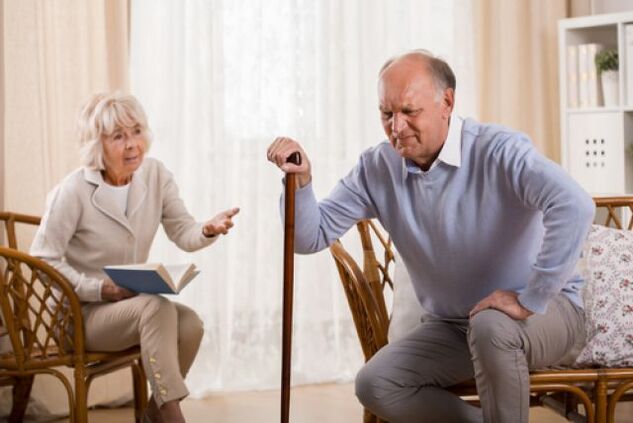
- infections of viral, fungal, bacterial origin (influenza, salmonellosis, hepatitis, tonsils, intestinal infection, Borrell, syphilis);
- autoimmune pathology (psoriasis, multiple sclerosis, red lupus);
- metabolic violation (gout);
- Bone diseases (osteoporosis, osteomyelitis, osteochondrosis, osteoarthrosis);
- allergic reactions;
- low immunity;
- Surgical operations in the joints.
Promotion for the emergence of pathology can be banal hypothermia, poor sanitary living conditions, an unbalanced diet.
What is the difference between arthritis and arthritis?Degenerative changes in the cartilage for arthritis, in addition to the usual listed causes, occur for reasons:
- age-related disorders for the functionality of the muscular-skeletal system;
- unused inflammatory process in the joints (arthritis, synovitis);
- poor blood circulation (atherosclerosis, varicose veins);
- Professional activities (athletes).
Typically, articular pathology is the result of some negative internal and external factors immediately.
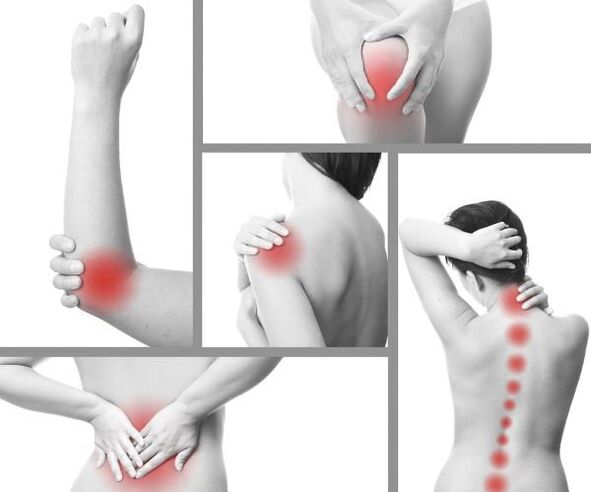
The difference between arthritis and arthrosis in symptoms
Symptoms of two diseases in general manifestations are quite similar.Inflammatory and non -inflammatory damage to the joints is characterized by:
- pain of varying intensity;
- a sense of rigidity and rigidity;
- Crunch and Creak as you walk;
- discomfort after prolonged rest;
- painful reaction to weather changes, physical activity;
- External deformation of the affected area.
At the same time, the nature and time of the appearance of unpleasant sensations, the severity and intensity of the pathological process vary significantly.
With these signs, you can understand what the disease is in front of you - arthritis, arthritis, what is the difference between them:
- Pain for arthritis occurs suddenly against the backdrop of relative health, with arthritis, it gradually increases as dystrophic changes in the cartilage - from two months to several years;
- Arthritis disturbs pain at night and morning hours, decreases after joint development, arthrosis pain, on the contrary, decreases at rest and increases significantly when moving (in the last stage is constantly present);
- Arthritis is always associated with an inflammatory process with swelling, redness, hyperemia, local temperature growth, for arthritis, such a course is characteristic only during periods of irritation;
- Arthritis is systematic, which includes the left and right joints of the legs or arms in the process at the same time, as well as affecting the heart, light, skin, vessels, nervous system.Arthrosis lesion usually does not go beyond a pathological joint;
- In the early stages, the appearance is distinguished - with arthritis, tissue inflammation is clearly visible, the site is swollen and becomes hot, with arthrosis no visual changes, and only in advanced cases of both diseases manifests joint deformation;
- Overall well -being with arthritis worsens - the temperature rises, has weaknesses, mistreatment, appetite disappears, weight decreases (in a chronic form this sign may be missing).Such symptoms do not disturb patients with arthrosis, only a painful and poorly working joint is in the spotlight.
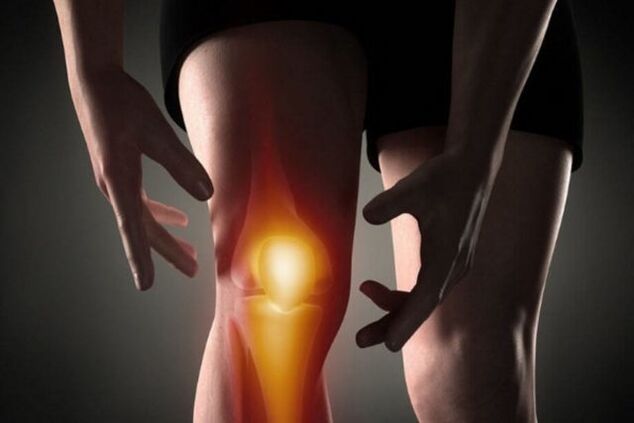
At different stages of the disease, clinical photography can vary significantly.It is possible to make an accurate diagnosis only after a thorough examination.
Differential diagnosis of arthritis and arthritis
At the first signs of common illness, it is necessary to register for a consultation with a doctor.An arthrologist is engaged in such pathologies, who know exactly how to recognize arthritis and arthritis and what is their change.If there is no such specialist in the clinic, you can visit an orthopedist, traumatologist, osteopath, rheumatologist, surgeon.With arthritis, depending on the etiology of the disease, an additional consultation of an infectious disease specialist, immunologist, neuropathologist, endocrinologist, cardiologist may be needed.
On the basis of initial confrontation and diagnosis, it is difficult to make an accurate diagnosis.
A number of instrumental research is required:
- radiography to determine the condition of the joints, recognition of damage, neoplasms;
- CT and MRI for detailed examination of not only common cavities but also soft tissue;
- Ultrasound - performed if there are contraindications to X -Rry and tomography.
All of these methods are very informative, applicable to both pathologies.
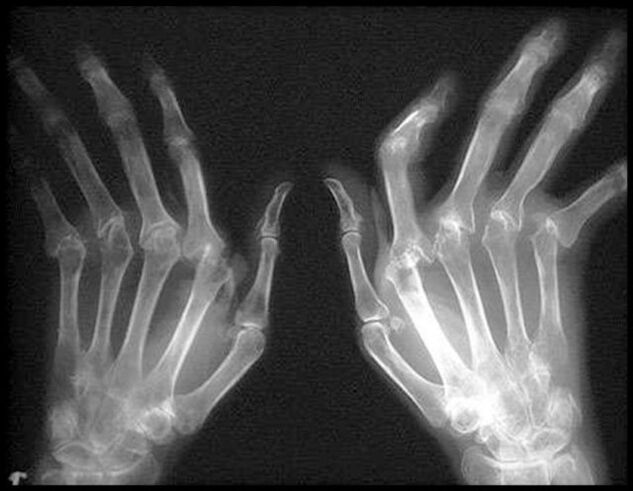
If arthritis is suspected, you cannot do without laboratory tests that allow you to identify the root cause of the disease and determine the general condition of the body:
- blood tests for leukocyte level, ESR, specific markers;
- Urine analysis for uric acid salts;
- rheumatic tests to detect a rheumatoid factor;
- the immune test to assess the state of the body's immune protection;
- PCR diagnostics in the pathogen of infection;
- Arthroscopy for the fence of synovial fluid for analysis.
A set of methods is selected individually based on a clinical view and a preliminary inspection of a specialist.A thorough examination does not take much time, but it is very important to make a differential diagnosis and describe a suitable treatment.
Change and features in the treatment of each disease
Both diseases include special therapy, without which arthritis passes into a chronic form, and arthritis deprives of performance.
The general principles of treatment are similar, but the tasks are different:
- With arthritis, the main purpose is to relieve inflammation, eliminate painful symptoms, prevent complications in other organs;
- With arthrosis, due to the inability to fully cure the disease, the main therapeutic emphasis is on relieving pain and stopping dystrophic processes in the cartilage.
The complex of medical measures necessarily includes medicines in the form of tablets, ointments, creams, solutions, dust, injections.As auxiliary methods, popular recipes, physiotherapy and therapeutic exercises are used.In advanced cases, you cannot do without surgical intervention.
Therapy is carefully selected according to individual indications.There is no universal remedy for arthritis and arthritis, self -medication is forbidden.
Arthritis and arthritis - what is the difference in the treatment of medicines
Pharmacy drugs are an integral part of the treatment of both diseases.You cannot do without them with arthritis due to the presence of a strong inflammatory process.In therapy they are used:
- Anti -inflammatory drugs non -steroidal in the form of tablets, dust, ointments.The drugs of this group simply stop inflammation and unpleasant symptoms simultaneously.
- Immunosuppressors.Press their immunity of autoimmune origin.
- Corticosteroid hormones.Choose severe pain with a form of tablets or intra -articular injections.
- Antibiotics.They have an antibacterial effect in the presence of an infectious process in the body and joints.
NSAID and corticosteroids are effective during the period of arthrosis deterioration, when inflammation and severe pain join the pathological process.In addition, the disease involves the use of:
- Chondroprotectors to restore the cartilage fabric and stop the destruction of the joint.On long -term basis, powders are used to take orally, intramuscular and intra -acticular injections.
- Oral painkillers.
- Vasodilator drugs to improve blood flow.
- Musorexants from hypertonitis and muscle spasm.
- Vitamin complexes to improve metabolic processes and prevent systemic complications.
Committoprotective agents and vitamins are also shown in some forms of arthritis, especially in chronic form.
Accurate therapy is chosen according to the results of the examination, taking into account the age and well -being of the patient.
Oil from arthritis and arthritis
Symptomatic therapy is equally necessary for arthritis and arthrosis of the joints.Various creams, ointments, gels work in place, eliminating inflammation, pain, swelling, discomfort.Moreover, they do not have a systemic effect on the body.
Can ease the situation:
- Anti -inflammatory ointments based on a special substance;
- other non -steroidal anti -inflammatory drugs;
- sedative sedatives and heating;
- local medicines that improve blood flow and elasticity of muscle apparatus-bonds based on snake and bee venom;
- greasy shark ointments, activating metabolic and regenerative processes in the joints;
- Friction with analgesic and anti -inflammatory properties.
Local funds rarely cause side effects, but do not forget about the possibility of an allergic skin reaction.

Traditional medicine
Popular methods are a good assistant in the treatment of arthritis and arthritis.Home recipes based on natural ingredients have a largely symptomatic effect, used as an additional tool.
With common arthritis inflammation, you can do:
- Compresses the night from the burial leaves, white cabbage, aloe, pre -washed and slightly toothed in the secretory of the liquid;
- Warm baths from pine needles, joints evaporating in a healing decoction;
- grinding a place affected by egg yolk, spoons of apple cider vinegar and terpentine bundles;
- A plant decoction of sage, wort and grads of St. John, producing 2 tablespoons of the collection in a semi -boiled boiling water, taking 0.5 cups before meals.
To relieve the condition with arthrosis will help:
- a compress from the ginger root, minced on a grater and attached to a sore joint to stimulate blood circulation and a heat effect;
- Rubika for the night of 50 g of honey and 1 tsp.Healing mummy;
- pepper pieces or mustard compress as a thermal procedure;
- Baths based on a decoction of mint leaves or soda salt solution.
All recipes can be used for both diseases, but only after consulting the attending physician.Home treatment can help, eliminating unpleasant sensations and damage, causing an allergic reaction and irritation.
Exercises for arthritis and arthritis
The purpose of therapeutic gymnastics is to restore joint mobility and prevent deformation changes.
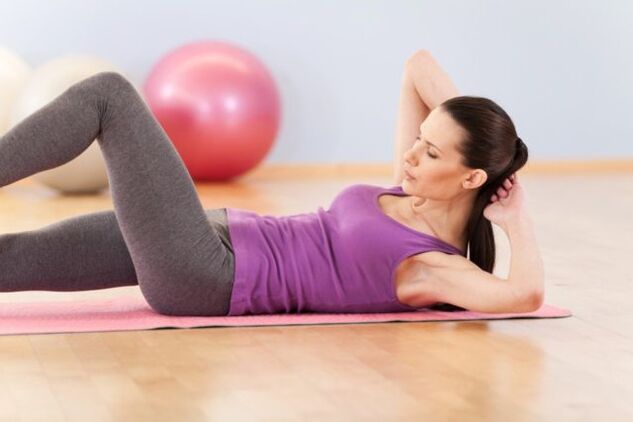
In the same way, this task is important for all articular pathologies:
- For the hip area - meetings at right angles, legs swinging forward and backwards, exercises "bike" and "scissors" in the paving position;
- For your knees - sit on the heel from the knee position and get up, the "bike" exercise - circular motion at the foot of your knees with closed feet, slowly moves with a "goose walking";
- For the ankle - to massage all separately one finger, rotate the foot in the direction of clock scorpions and against, stretch the sock from you and for yourself;
- For brushes and fingers - make circular movements with a brush in different directions, squeeze and unlock the fist, turn a round object into your hands;
- For the shoulder band - rotate back and forward, raise your arms and shoulders alternately.
All exercises can only be performed when removing the disease by solving a doctor.
Therapeutic auxiliary techniques
Common treatment is not limited to medical and popular methods.It is important to perform comprehensive therapy, especially in the rehabilitation phase after an acute period and restoring joint mobility.
Experts recommend:
- massage to reduce pain and develop the affected joint (dots, honey, manual techniques);
- Physiotherapeutic procedures to improve cell metabolism, accelerate tissue regeneration, prevention of complications (magnetotherapy, ultrasound, electrophoresis, paraffinopia);
- Alternative medicine (hirudotherapy, acupuncture, kineet orapia);
- Proper nutrition (diet) with a predominance of fruits and vegetables, rejection of harmful foods and alcohol;
- Treatment of the sanatorium resort with a complete complex of therapeutic services.
In advanced cases, and this often happens with arthrosis, you need to be directed to radical surgical methods.Sinectomy, arthroplasty, endoproshetics, arthrodesis will help the joints turn the joints.Before this condition, the course of the disease is best not to allow, performing all medical recipes.
cONcluSiON
We provide short form information about arthritis and arthritis diseases, what is the difference in all important criteria:
| CRITERION | Arthritis | arthrosis |
| Etiology | Inflammatory disease, mainly acute form | Degenerative-District course, exclusively chronic |
| Reason | Infections, autoimmune and metabolic disorders | Age -related changes in the skeletal muscle system, underrated arthritis |
| Injuries, hormonal failures, large corners, sitting living and unhealthy, chronic pathology | ||
| Symptoms | Sudden, pronounced appearance, has a common disease | Gradual growth, symptoms are local |
| Pain, cramp, stiffness, stiffness while walking, external deformation (in the last stage) | ||
| Troubleshooting | Laboratory tests of blood and urine | - |
| X -Ray, ct, mri | ||
| Treatment | NSAID, corticosteroids, immunosuppressants, antibiotics | Chondroprotectors, analgesics, muscle relaxants, hormones, vitamins |
| Predict | In most cases, a complete recovery, rarely - switching to a chronic form | Gradual destruction of joints, followed by a loss of mobility, disability, need for surgery |





































